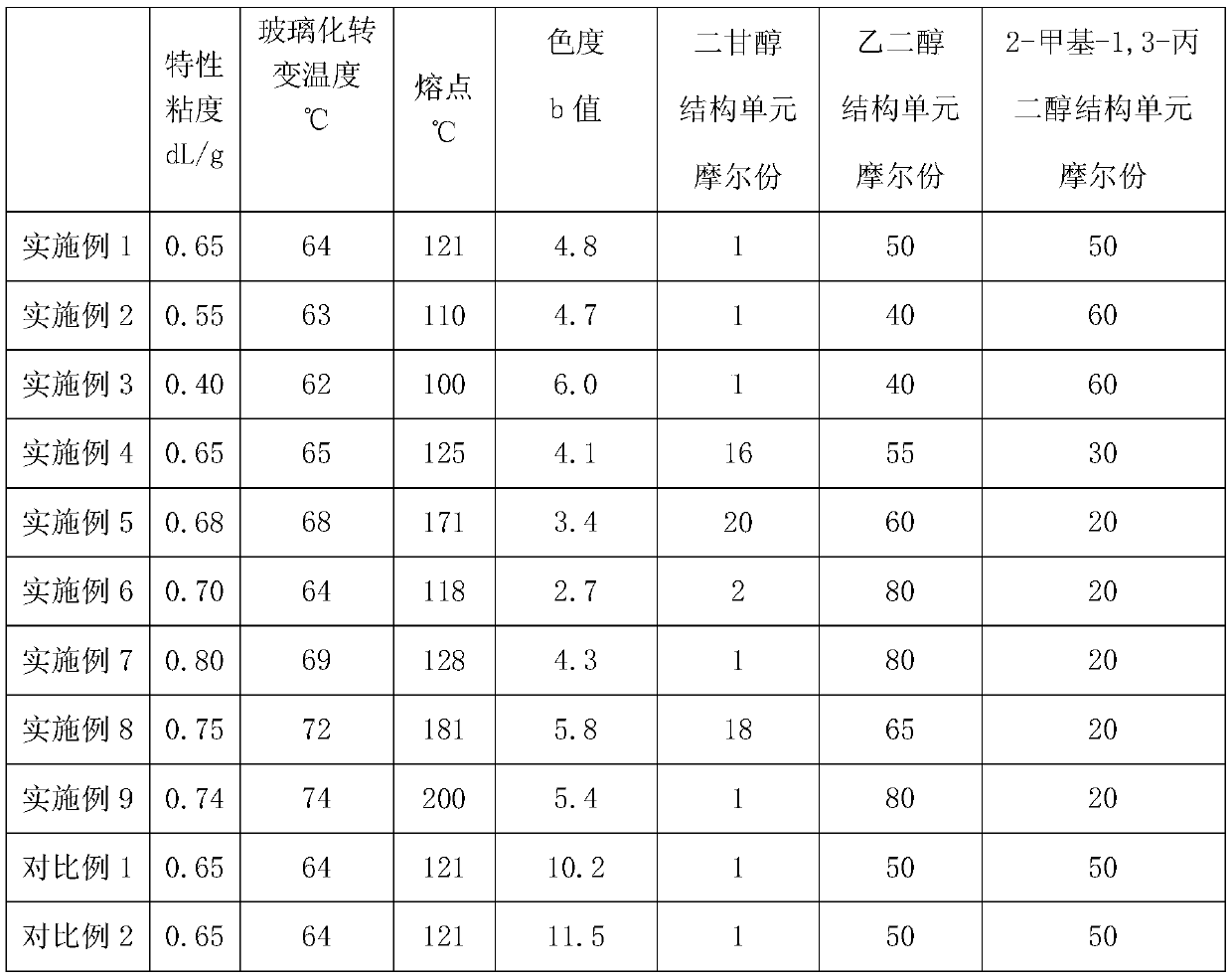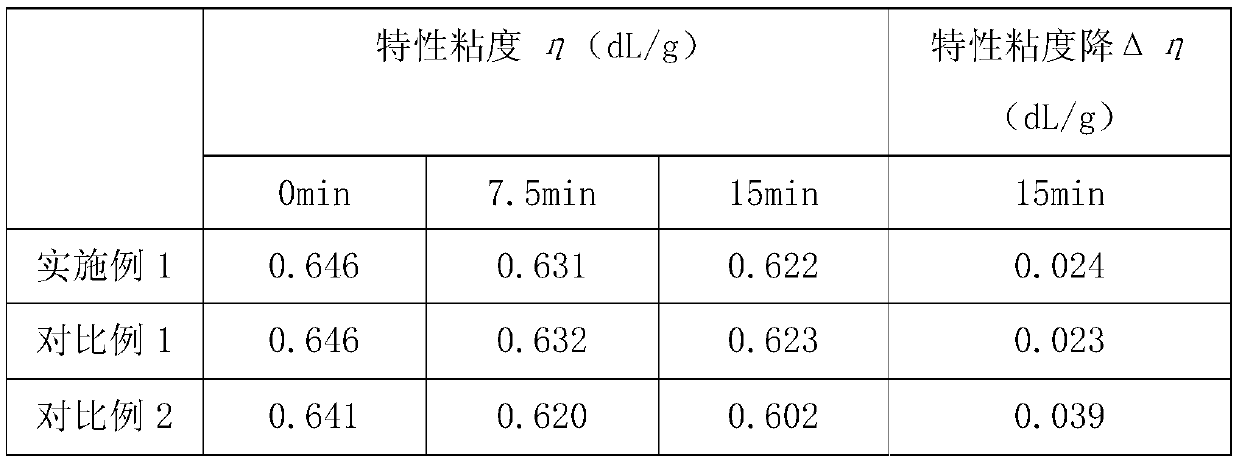Preparation method of polyester, and polyester
A technology of polyester and oligomers, which is applied in the field of polymers, can solve the problems of poor thermal stability of polyester, achieve the effects of reducing re-agglomeration, improving thermal stability, and avoiding the introduction of heavy metal cobalt
- Summary
- Abstract
- Description
- Claims
- Application Information
AI Technical Summary
Problems solved by technology
Method used
Image
Examples
Embodiment 1
[0061] (1) Prepare terephthalic acid, 2-methyl-1,3-propanediol, ethylene glycol, titanium catalyst and xylyldibutylbenzofuranone into slurry. The molar ratio of acid to alcohol in the slurry is 1:1.12, relative to 100 molar parts of terephthalic acid, 2-methyl-1,3-propanediol is 50 molar parts, ethylene glycol is 62 molar parts, and 12 molar parts of Ethylene glycol is excess aliphatic dihydric alcohol and will be removed in the subsequent reaction process; relative to the total weight of low-melting polyester, the addition of xylyl dibutyl benzofuranone is 300ppm, and the addition of titanium-based catalyst The amount is 6 ppm based on the content of titanium element.
[0062] (2) The slurry prepared in step (1) is continuously added to the esterification system composed of the first vertical esterification kettle and the second vertical esterification kettle for esterification reaction. The reaction temperature of the first esterification kettle is The reaction temperature ...
Embodiment 2
[0067] (1) Prepare terephthalic acid, 2-methyl-1,3-propanediol, ethylene glycol, titanium catalyst and methylene bis(4-methyl-6-tert-butylphenol) monoacrylate into slurry material. The molar ratio of acid to alcohol in the slurry is 1:1.12, relative to 100 molar parts of terephthalic acid, 2-methyl-1,3-propanediol is 60 molar parts, ethylene glycol is 52 molar parts, and 12 molar parts of Ethylene glycol is excess aliphatic dihydric alcohol and will be removed in the subsequent reaction process; relative to the total weight of low-melting polyester, the addition of methylene bis(4-methyl-6-tert-butylphenol) monoacrylate The amount is 500 ppm, and the addition amount of the titanium-based catalyst is 10 ppm based on the content of titanium element.
[0068] (2) The slurry prepared in step (1) is continuously added to the esterification system composed of the first vertical esterification kettle and the second vertical esterification kettle for esterification reaction. The reac...
Embodiment 3
[0073] (1) Terephthalic acid, isophthalic acid, 2-methyl-1,3-propanediol, diethylene glycol, ethylene glycol, titanium catalyst and [4-tert-butyl-2-(5-tert Butyl-2-oxo-3H-1-benzofuran-3-yl)phenyl]-3,5-di-tert-butyl-4-hydroxybenzoate was prepared as a slurry. The molar ratio of acid to alcohol in the slurry is 1:1.12, relative to 100 molar parts of aromatic dibasic acid, 2-methyl-1,3-propanediol is 60 molar parts, ethylene glycol is 51 molar parts, diethylene glycol is 1 molar part, wherein 90 molar parts of terephthalic acid and 10 molar parts of isophthalic acid in the aromatic dibasic acid, 12 molar parts of ethylene glycol are excess aliphatic dibasic alcohols and will be removed in the subsequent reaction process; Relative to the total weight of the low-melting polyester, [4-tert-butyl-2-(5-tert-butyl-2-oxo-3H-1-benzofuran-3-yl)phenyl]-3,5 - The addition amount of di-tert-butyl-4-hydroxybenzoate is 50 ppm, and the addition amount of the titanium-based catalyst is 20 ppm b...
PUM
| Property | Measurement | Unit |
|---|---|---|
| melting point | aaaaa | aaaaa |
| glass transition temperature | aaaaa | aaaaa |
| acid value | aaaaa | aaaaa |
Abstract
Description
Claims
Application Information
 Login to View More
Login to View More - R&D
- Intellectual Property
- Life Sciences
- Materials
- Tech Scout
- Unparalleled Data Quality
- Higher Quality Content
- 60% Fewer Hallucinations
Browse by: Latest US Patents, China's latest patents, Technical Efficacy Thesaurus, Application Domain, Technology Topic, Popular Technical Reports.
© 2025 PatSnap. All rights reserved.Legal|Privacy policy|Modern Slavery Act Transparency Statement|Sitemap|About US| Contact US: help@patsnap.com


